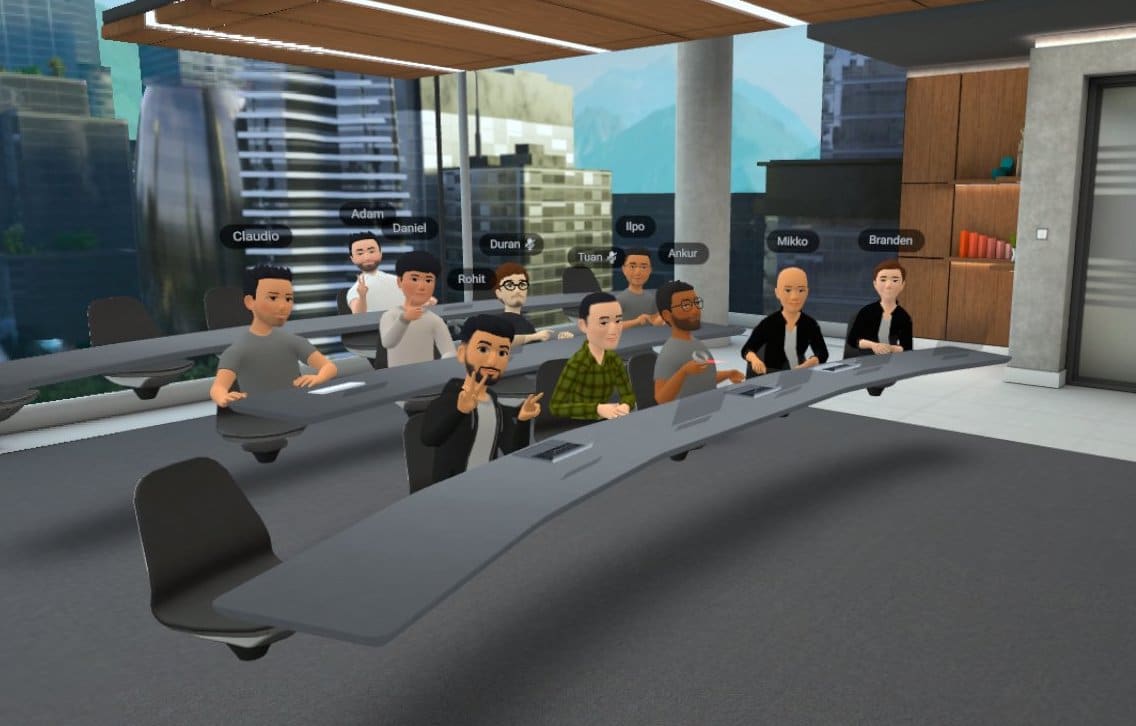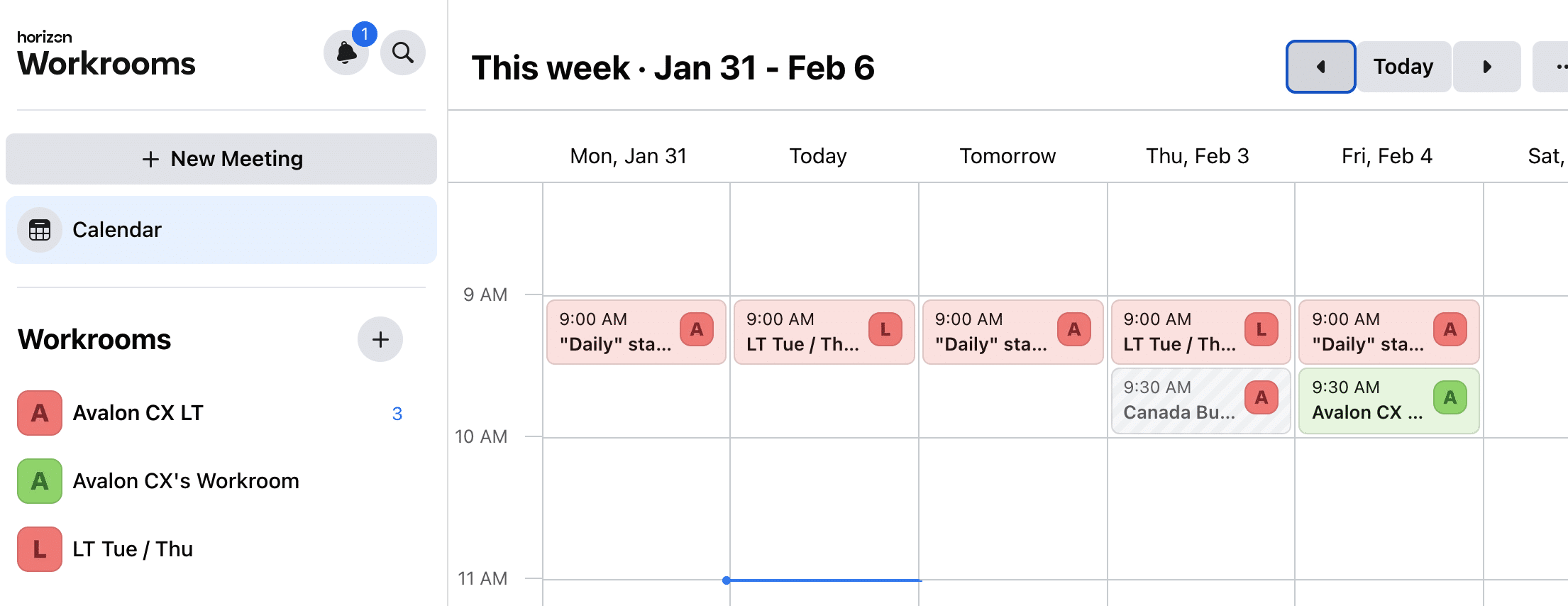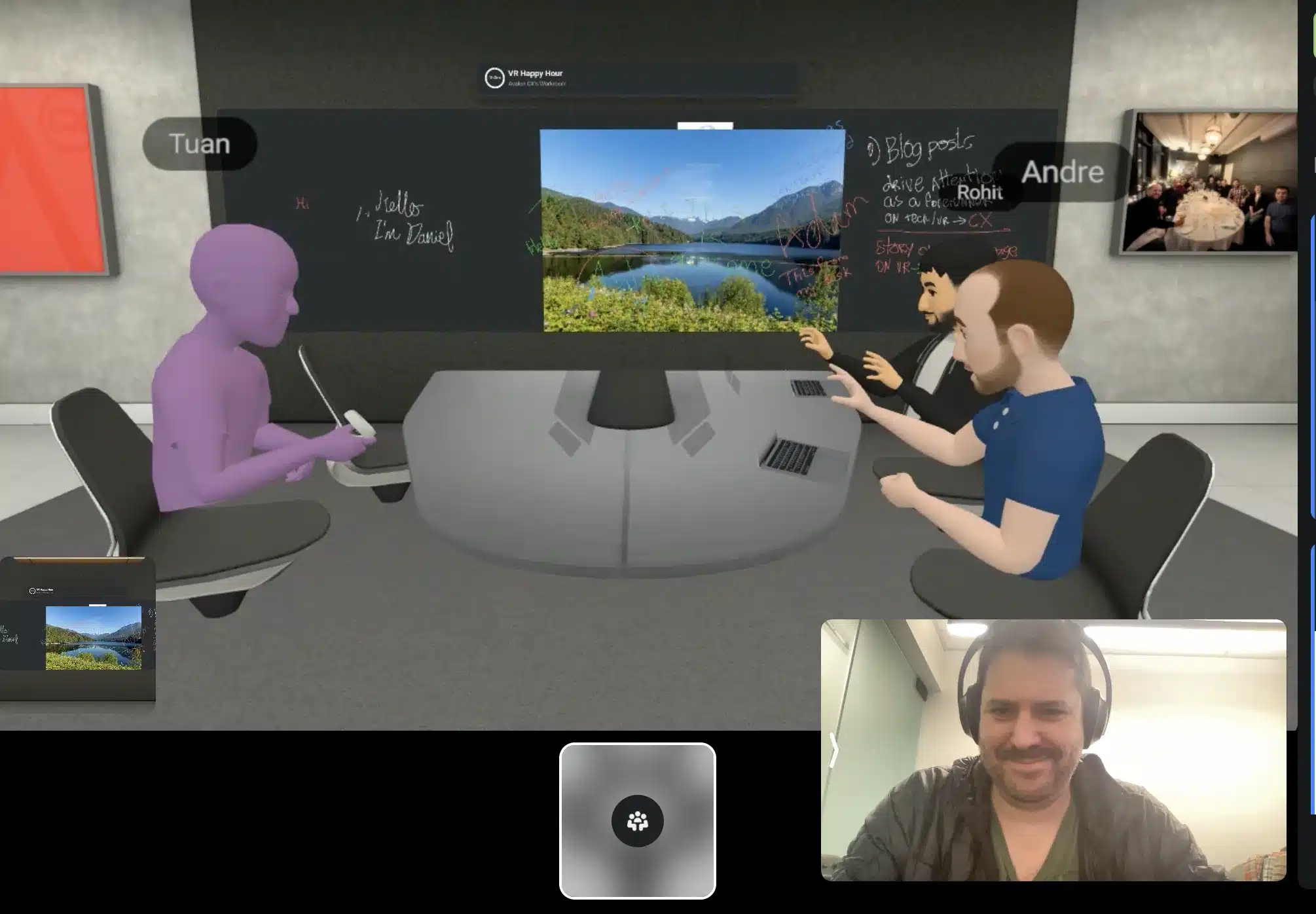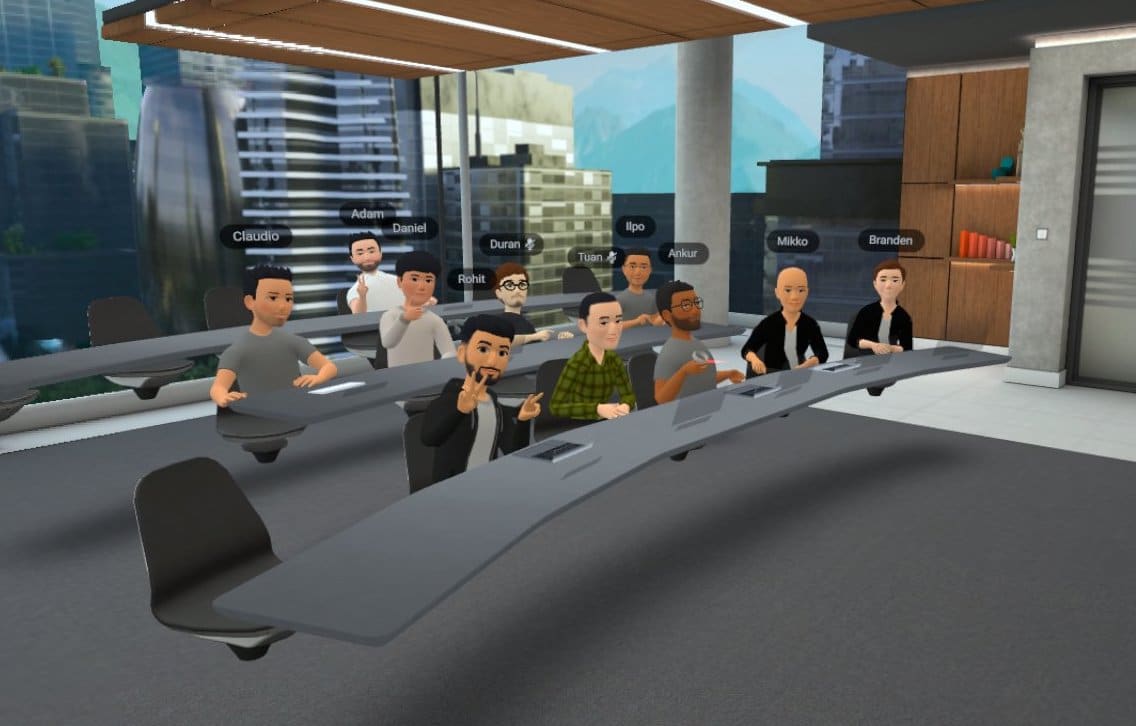VR for Business: The Follow-Up

We have seen a lot of excitement about the metaverse and its implications on the way we communicate, work and do business. As technology early adopters and forerunners, Avalon CX is on a continuous pursuit to be on the leading edge of transformational new tech.
Last month we have talked about Avalon CX’s implementation of VR as a tool for business – our goal is to improve communication, enhance team interactions, and function as a bridge between working remotely and face-2-face at the office. You can find the original blog “Is VR for Business Ready for Prime Time?” here.
One month into use, what are the results so far? Our first question is if we have noticed any improvements in team communication and engagement. What are the hurdles we did not foresee and challenges yet in place for VR to be fully adopted? Let us find out.
We have evaluated multiple solutions for VR meeting rooms and have selected Meta Workrooms, but new apps are showing up.
“Is it comfortable to use during prolonged sessions? Can I wear glasses while wearing the headset? Will I feel dizzy?”
Team engagement
As described in our last blog, the first thing we had to do was to get the headsets for all team members. We did it at our Christmas party in Vancouver, where we also explained what we were aiming to achieve with the headsets – besides the occasional gaming, of course 🙂
Although we got excited with the prospect of trying out such a novel form of interaction, some concerns were raised about its overall usability: is it comfortable to use during prolonged sessions? Can I wear glasses while wearing the headset? Will I feel dizzy?
Meeting Rooms setup for whole team interactions
One step to enable people to get together in VR was to create a virtual meeting room. The platform of choice was Facebook’s Horizon Workrooms, but there are some other apps for that purpose too. You can create as many rooms as needed for different purposes, send individual invitations to join that room, or leave it open, sharing a generic link. The room will not only be customizable (more on that later) but also store any files, chats, photos, notes, tasks, and links that can be accessed via a browser or mobile app outside of VR too.
Once the room is created, you will have the ability to use a calendar to schedule VR meetings and invite people to join (VR or otherwise). If you have your business email linked to the account, it will also show on your regular calendar too.

Everyone got an email with straightforward instructions on how to do the initial account setup, avatar customization, virtual desk setup, and how to join a VR meeting room.
“Seeing each other as avatars and how each other tried to represent (or not) their real person is a hilarious thing to see!”
We decided to start the trial on our weekly happy hour – moving it from the usual Teams meeting video call to a Horizon Workrooms dedicated VR Room. By the scribbles on the whiteboard, we could see that people were already trying out VR and getting the hang of the experience ahead of the scheduled happy hour.
First overall impression? It’s FUN! Seeing each other as avatars and how each other tried to represent (or not) their real person is a hilarious thing to see – and that really helped with the bonding and overall initial experience.

We are now expanding the use of VR to other meetings, including our weekly hall hands – where we use screen sharing and the virtual whiteboard as well.
There is some limited customization to the room itself – you can currently choose amongst 3 different overall meeting room styles and change some signage and wall posters – but not much more than that on the current version.
One nice thing is the dynamic seating, which adjusts the table size to accommodate the number of participants – and also the possibility of choosing a specific configuration – presentation mode, round table, etc.

The overall team feedback has been very positive, and there are some drawbacks and improvements that need to be addressed still. Here are some of the comments we have got:
First setup, configuration
Pros:
- In general, very straightforward to setup and easy first configuration.
- The setup felt intuitive unless it was done in a space-constrained area.
- The hardware build is very good.
- Setting up your virtual workspace on VR was easy, and is great to be able to have a “passthrough” area where you can see your real keyboard and mouse.
- Differently from VR games, you feel less dizziness because there is a VR desk mapped to your real desk, which helps with the overall sense of space.
Cons:
- Other single sign-on options could be available.
- Not much can be customized on the meeting rooms, for example, adding our own 3D assets.
“Non-VR participants can join as a floating TV screen and engage in the meetings as well.”
Interactivity, Comfort, and Use
Pros:
- Even though VR meetings are not a substitute for face-to-face meetings, it is no doubt that it is better than online video meetings.
- There is a feeling of a real meeting environment, like people are talking to each other without interruption. Things like hand gestures and the whiteboard greatly help with explaining things.
- Atmospheric sound is perfect while talking to the person sitting beside you while also being able to listen to others across the table. Discussions can happen with a friend while the presenter answers questions from others.
- Workroom VR gives more engagement and excitement during happy hours.
- Feels much better than using other video tools for chats. A clear winner over other types of online conversation.
- Dynamic audio makes conversations much nicer, with the possibility to have multiple simultaneous conversations, which online video calling programs can’t handle.
- Non-VR participants can join as a floating TV screen and engage in the meetings as well.
Cons:
- The positioning of the lenses is perfect but can improve focus.
- The camera for hand tracking is not perfect, can be improved.
- Battery capacity can be improved.
- Typing through the passthrough needs some getting used to.
- No audio (yet) from the shared screen.
- Presenting would be tough if you were standing on the whiteboard since you can’t see any notes. Some way to tie your desktop to your arm would be nice.
- No hotkey for mute/unmute – you need to click on a VR button.
Conclusion
As a new and evolving tool, there is still a lot to be fine-tuned – from the occasional freezes to screen sharing glitches to customization improvements – but the bottom line is that VR for Business is here to stay. As more companies start adopting it, we will see an increasing offering of new apps and novel ways to use VR to improve our work.
The expansion of the Metaverse initiatives (as Facebook’s Horizon’s World) will allow greater flexibility and not only allow companies to create their own fully customized VR experiences, virtual spaces, and interactive and connected experiences – but also open the path for new inter-company businesses through a totally different (and infinitely vast) marketplace. Avalon CX will be there, and we will share our experiences every step of the way.
At Avalon CX, we are experts in designing and developing consumer electronics products and experiences. We keep ourselves at the cutting edge of technology also in our daily work. This makes us also an exciting company to work at. We’d be happy to help you and hear your thoughts. Know more about us and check our other posts at: www.a-cx.com
